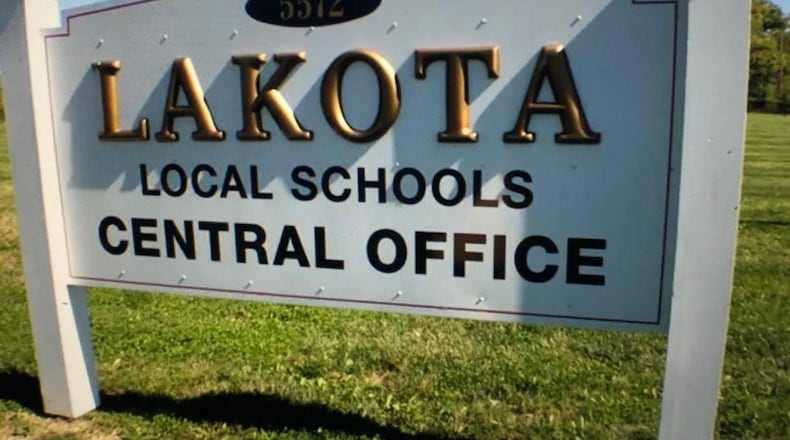That’s according to a recent report from the top financial officer of Butler County’s largest school system, who recently presented his state-mandated, semi-annual five-year financial forecast to the Lakota Board of Education.
Lakota Treasurer Adam Zink told board members the possibility of state changes in local property tax collections may impact the district’s financial projections.
Zink cautioned there is a state property tax reform committee that is reviewing how property taxes are being billed, including a possible cap on how much taxes could grow.
“If that was to happen, for all of us (who) are residents of the district, that would be wonderful news,” he said. “However, for the district, if there was a cap on real estate growth, then that could have a negative implication for future forecasts.”
Credit: Nick Graham
Credit: Nick Graham
Zink also told the board there have been state-level discussions “about the reduction of the 20-mill floor.”
Per the Ohio constitution, the 20-mill floor is the lowest effective rate a district’s tax levies may be reduced to, which limits the impact on property tax bills when taxpayers’ property value increases. In this five-year forecast, the 20-mill floor does not apply to Lakota. The district currently collects 23.29 mills of property taxes from residential and agricultural property (also known as Class I), and over 30 mills of tax on commercial, or Class II, property for the schools’ general fund.
The five-year school district financial projections — required by the state each May and November — can be problematic due to the unknown nature of funding that will be determined by future state two-year operating budgets.
According to Lakota’s report on Zink’s board presentation, in the most recent triennial property valuation in tax year 2023, Lakota’s effective millage, or the tax millage amount the district can collect, decreased about seven mills.
The decrease is due to Ohio school funding law, which ensures districts cannot collect more local tax revenue due to inflationary or other increases in property values.
For most voted tax levies, when property values increase, the millage rate Lakota collects decreases, to keep the dollar amount collected the same. But the millage rate cannot go below the state minimum of 20 mills.
Zink said Lakota’s Class I total effective millage rate for tax year 2023 has dropped below what it was in 2012, going from 38.69 mills to 26.51 mills in tax year 2023, which residents pay in 2024.
“This is a result of our growing community and not going back (to taxpayers) for additional operating dollars.”
The last time Lakota asked the community for a new operating levy was in 2013.
Lakota’s five-year forecast shows that the school district has kept expenses lower than revenues each of the past few years, but that margin has been shrinking. After being $2.01 million in the black in 2021-22, they project to finish the 2023-24 school year $193,000 in the black.
The district’s forecast projects a significant increase in expenditures next year (rising from $203.2 million to $217.8 million), and says the district will operate about $5.6 million in the red in 2024-25. Lakota’s cash balance can absorb that deficit — as of this summer, the district said it would have $116.1 million in the bank.
In Ohio, public school districts operate on a fiscal year basis from July 1 to June 30. As of June 30, the last of the federal ESSER funds (Elementary and Secondary School Emergency Relief) will end. ESSER funding to local districts began in fiscal year 2020-2021.
Lakota officials reported the last remaining ESSER funds were utilized in this fiscal year.
“This was one-time funding that we will not receive going forward. Lakota used this funding throughout the COVID-19 pandemic, including $2.6 million to pay for student fees to give relief to families in our community.”
“Now that the funds have been fully utilized, student fees will be brought back for the coming school year.”
About the Author
